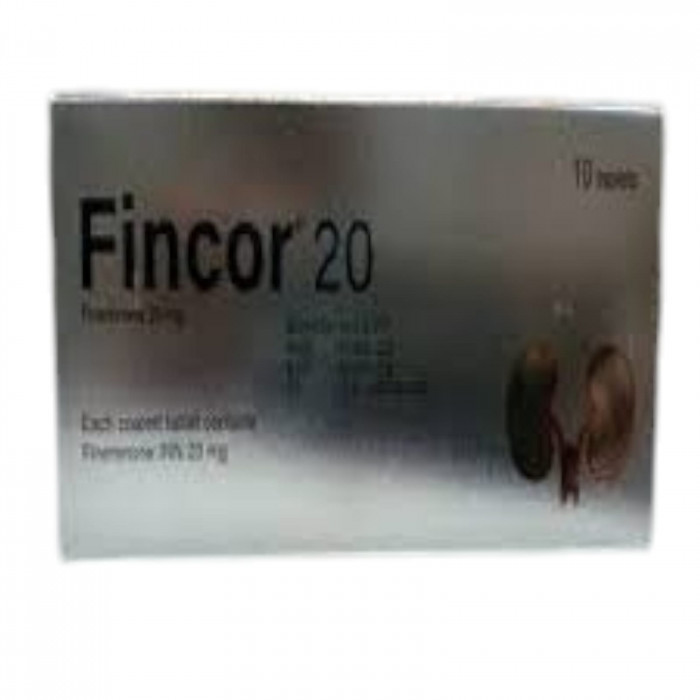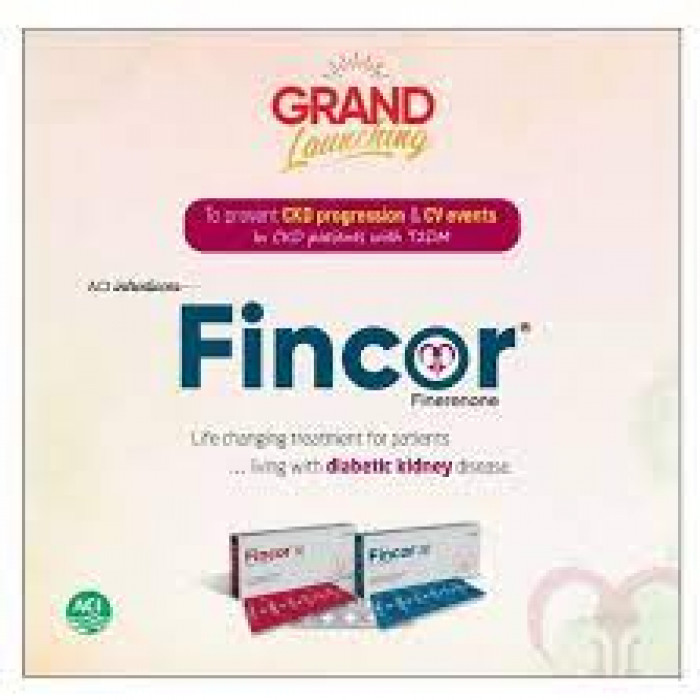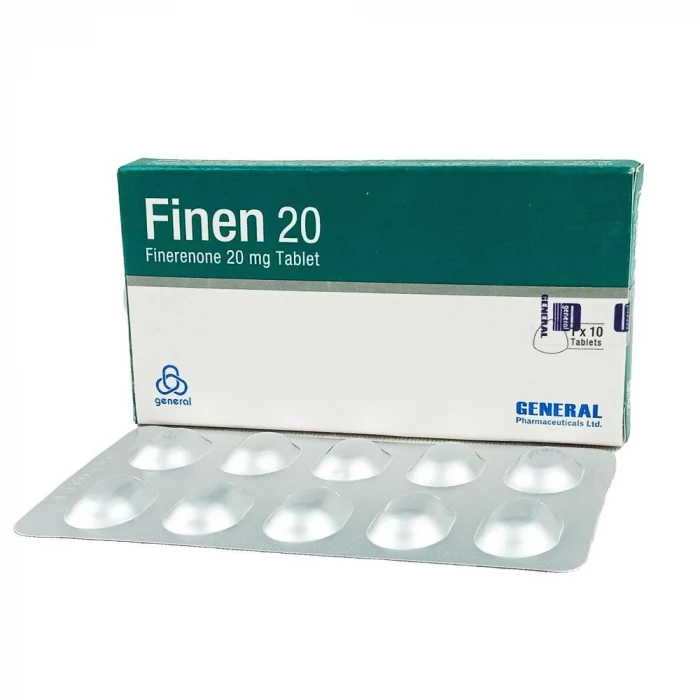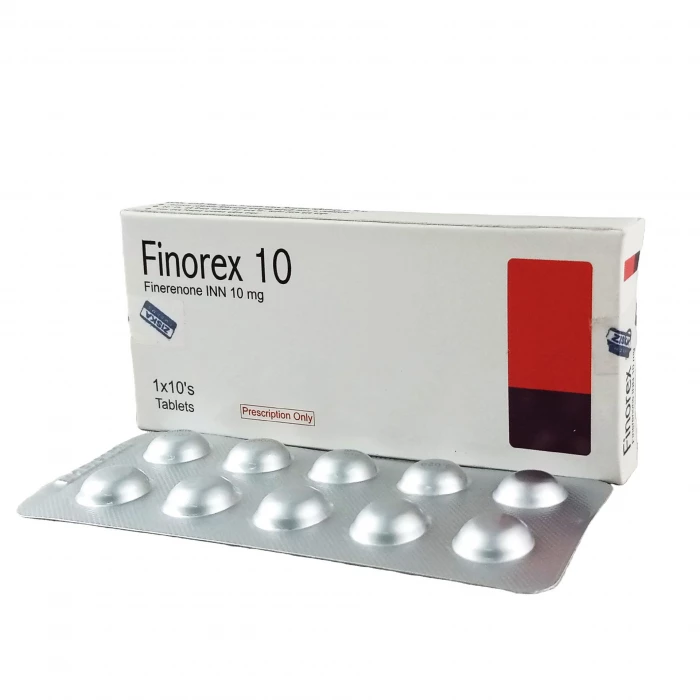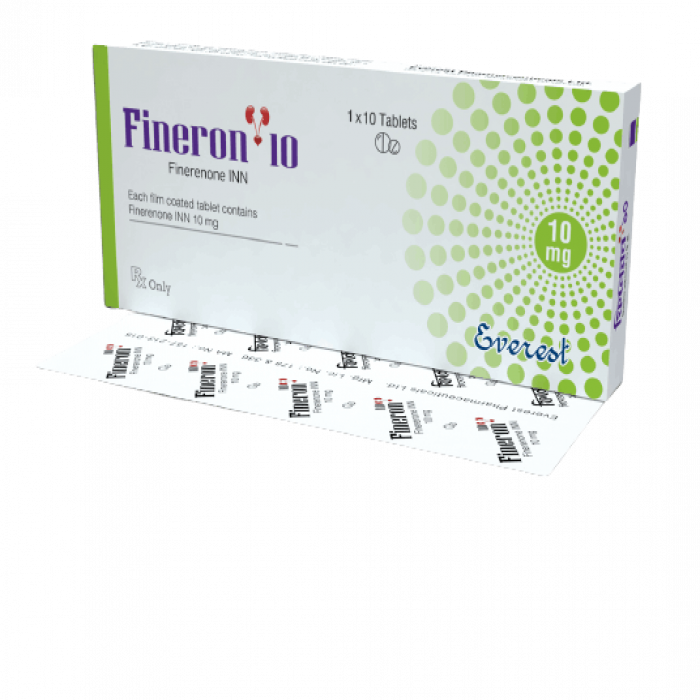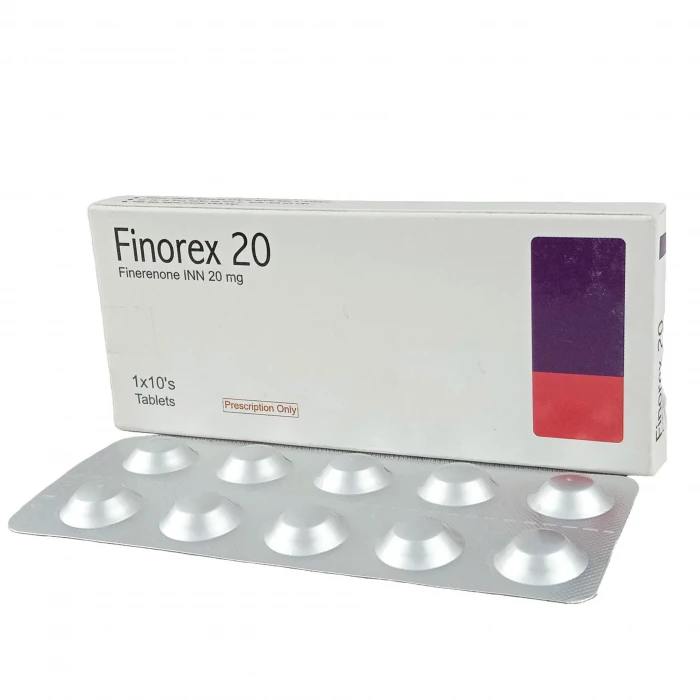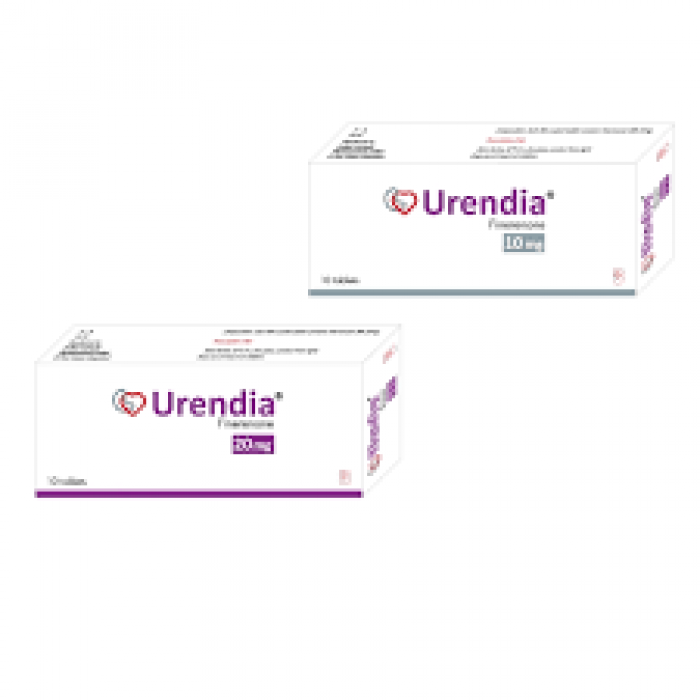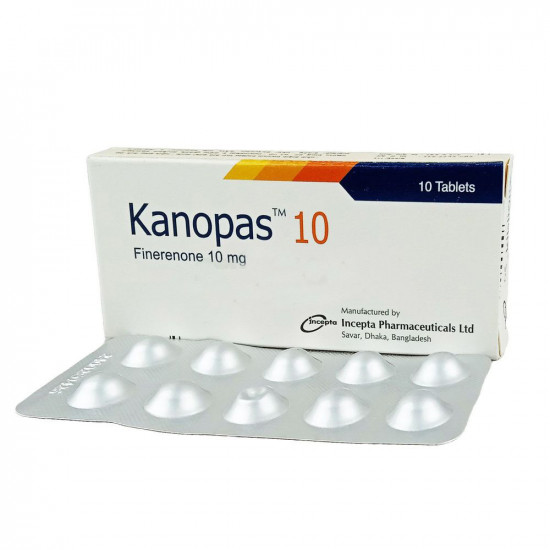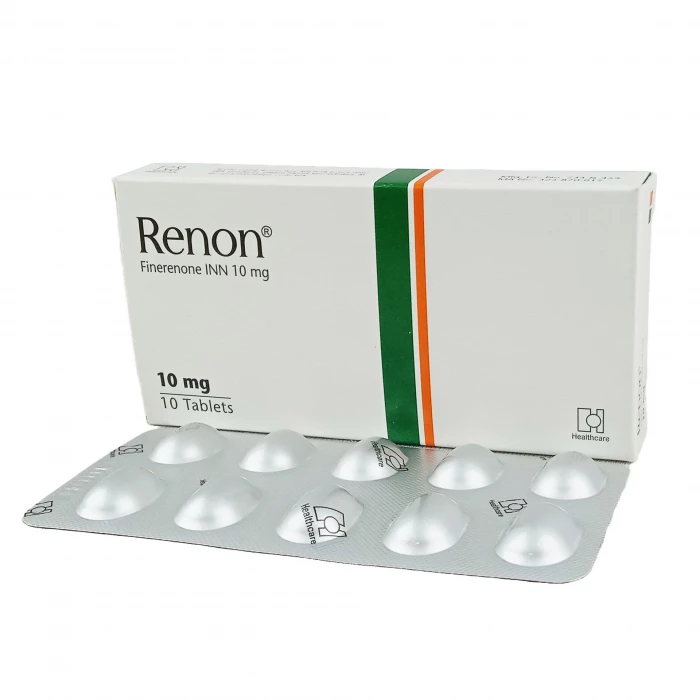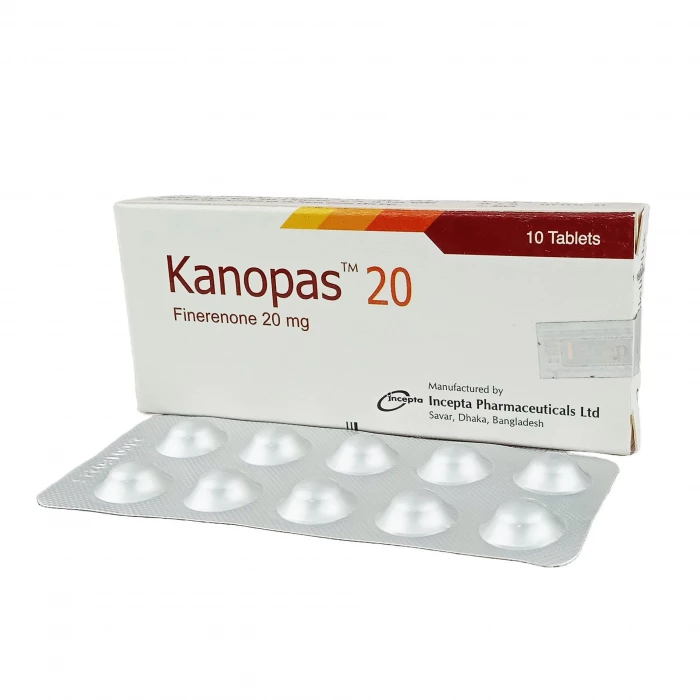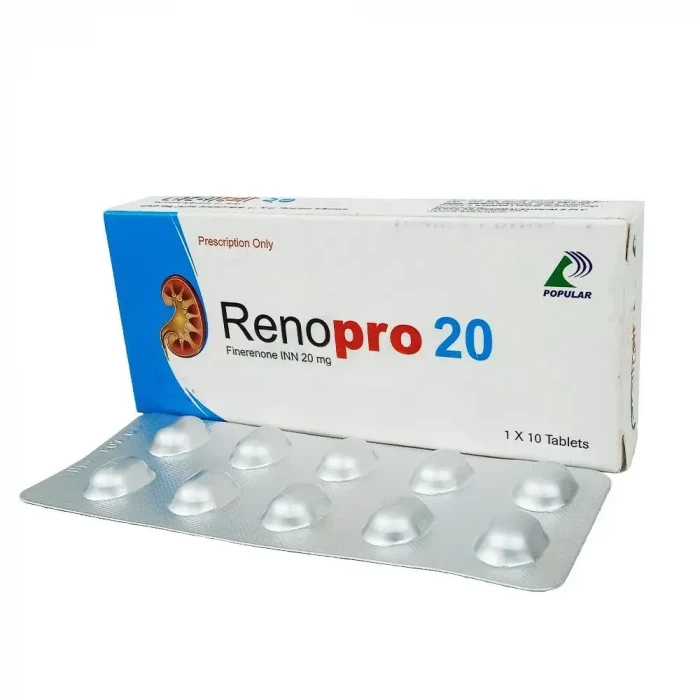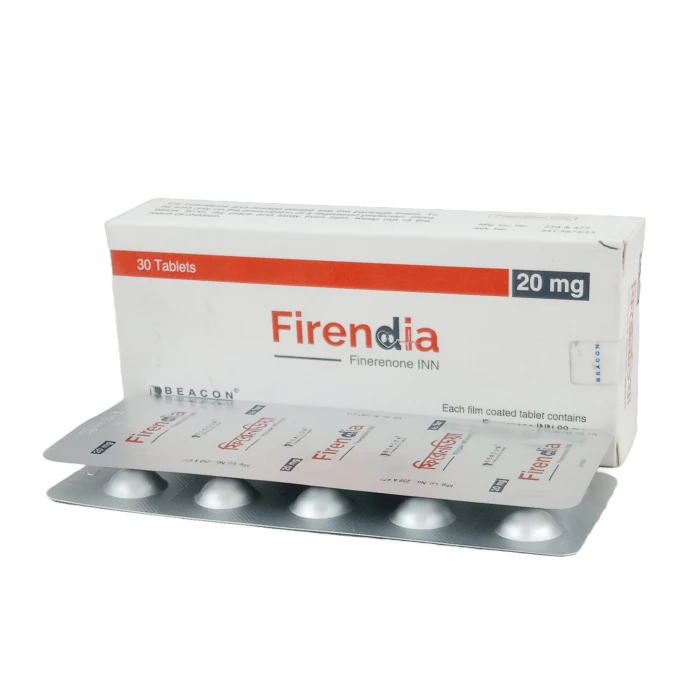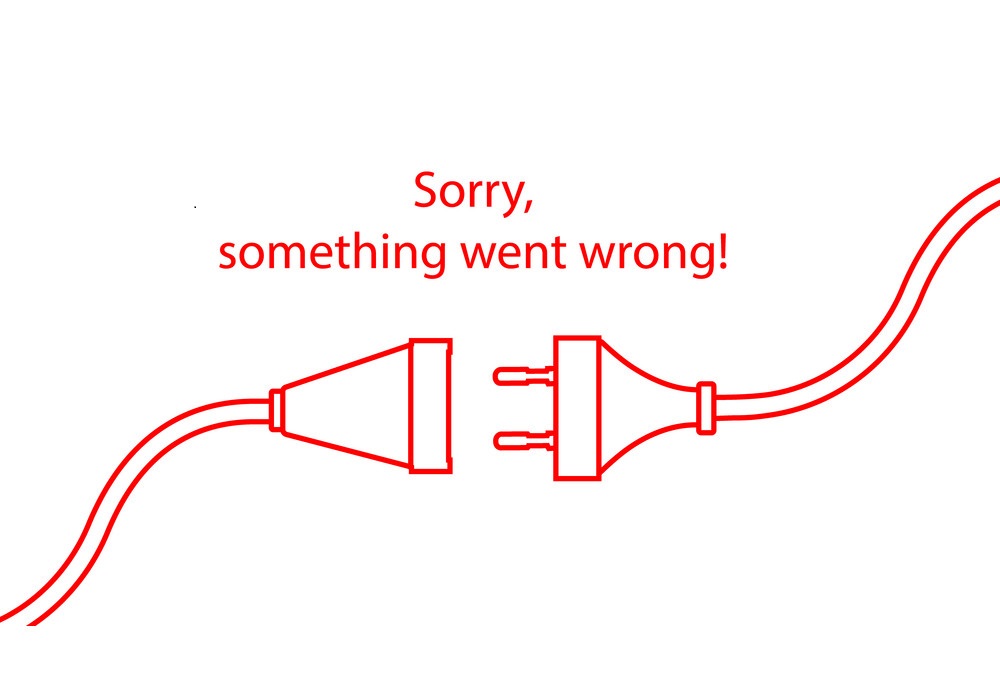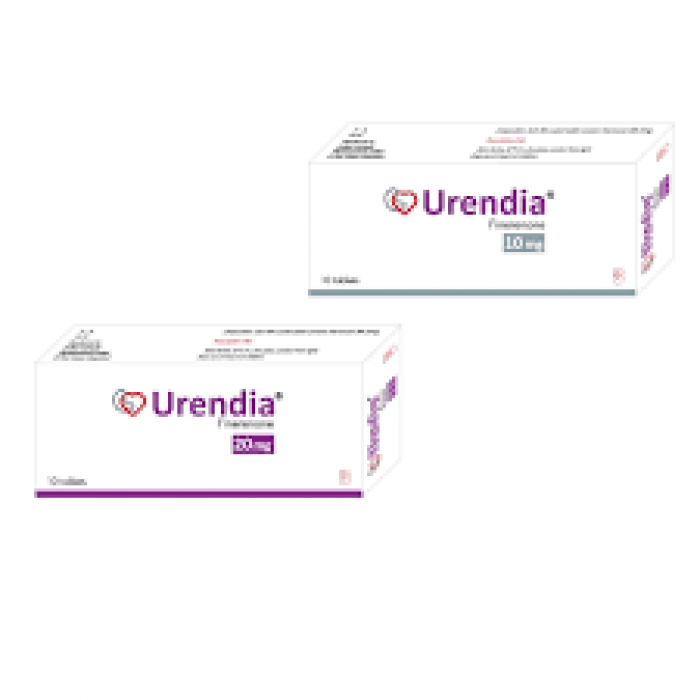
✔ 100% Authentic Product
👁️ Currently Viewing 2025
Urendia 10mg Tablet 10pcs
Urendia 10 is used to treat patients with chronic renal damage caused by type 2 diabetes. Urendia 10 also lowered the occurrence of new-onset heart failure considerably. Chronic renal disease is defined by a gradual kidney function decline over time. Type 2 diabetes occurs when your body cannot maintain normal blood sugar levels.
Discount
Price: ৳ 784
MRP:
৳
800
2%
Off

100% Genuine Products, Guaranteed

Safe & Secure Payments, Always

Fast, Secure & Efficient Delivery

Proper Packaging
 Cash on Delivery - All over Bangladesh
Cash on Delivery - All over Bangladesh Regular Delivery - 12-24 Hours, Dhaka City* Charge Tk.39-59
Regular Delivery - 12-24 Hours, Dhaka City* Charge Tk.39-59 Regular Delivery - 24-48 Hours, Other Cities* Charge Tk.99-110
Regular Delivery - 24-48 Hours, Other Cities* Charge Tk.99-110
 ফ্রি ডেলিভারিঃ - ৯৯৯ টাকা+ অর্ডারে, ঢাকা
শহরে
ফ্রি ডেলিভারিঃ - ৯৯৯ টাকা+ অর্ডারে, ঢাকা
শহরে ফ্রি ডেলিভারিঃ - ২৯৯৯ টাকা+ অর্ডারে, ঢাকার
বাহিরে
ফ্রি ডেলিভারিঃ - ২৯৯৯ টাকা+ অর্ডারে, ঢাকার
বাহিরে
100% Genuine Products, Guaranteed
Safe & Secure Payments, Always
Fast, Secure & Efficient Delivery
Proper Packaging
 Cash on Delivery - All over Bangladesh
Cash on Delivery - All over Bangladesh Regular Delivery - 12-24 Hours, Dhaka City* Charge Tk.39-59
Regular Delivery - 12-24 Hours, Dhaka City* Charge Tk.39-59 Regular Delivery - 24-48 Hours, Other Cities* Charge Tk.99-110
Regular Delivery - 24-48 Hours, Other Cities* Charge Tk.99-110 ফ্রি ডেলিভারিঃ - ৯৯৯ টাকা+ অর্ডারে, ঢাকা
শহরে
ফ্রি ডেলিভারিঃ - ৯৯৯ টাকা+ অর্ডারে, ঢাকা
শহরে ফ্রি ডেলিভারিঃ - ২৯৯৯ টাকা+ অর্ডারে, ঢাকার
বাহিরে
ফ্রি ডেলিভারিঃ - ২৯৯৯ টাকা+ অর্ডারে, ঢাকার
বাহিরে
✅ Description:
Finerenone is prescribed to lower the risk of sustained declines in estimated glomerular filtration rate (eGFR), end-stage kidney disease, cardiovascular death, nonfatal myocardial infarction, and heart failure hospitalizations in adults with chronic kidney disease (CKD) related to type 2 diabetes (T2D).
Pharmacology
Finerenone is a nonsteroidal mineralocorticoid receptor (MR) antagonist that selectively targets MR, which is activated by aldosterone and cortisol and influences gene expression. By blocking MR-mediated sodium reabsorption and MR overactivation in tissues like the kidneys, heart, and blood vessels, Finerenone helps to counteract fibrosis and inflammation. It has high potency and selectivity for MR, with minimal interaction with other steroid receptors. When used, Finerenone has been shown to reduce systolic blood pressure by 3 mmHg and diastolic blood pressure by 1-2 mmHg. The drug does not prolong the QT interval even at doses up to four times the maximum recommended amount. After oral administration, Finerenone is fully absorbed but has a 44% absolute bioavailability. Peak plasma levels are reached within 0.5 to 1.25 hours. Finerenone’s exposure increases with dose, reaching a steady state in about 2 days. It has a volume of distribution of 52.6 L and is 92% bound to plasma proteins. Its half-life is approximately 2 to 3 hours, and it is primarily metabolized by CYP3A4 with about 80% of the dose excreted in the urine.
Dosage & Administration
- Starting Dosage: Begin with 10 mg or 20 mg orally once daily, depending on eGFR and serum potassium levels. After 4 weeks, adjust to the target dose of 20 mg once daily, considering eGFR and serum potassium.
- eGFR ≥60 mL/min/1.73 m²: Start with 20 mg once daily.
- eGFR 25 to <60 mL/min/1.73 m²: Start with 10 mg once daily.
- eGFR <25 mL/min/1.73 m²: Not recommended.
- Administration: Tablets can be taken with or without food. For patients who cannot swallow tablets, they can be crushed and mixed with water or soft foods.
Monitoring and Dose Adjustment
- Measure serum potassium 4 weeks after starting treatment or adjusting the dose, and adjust accordingly. If potassium levels are >4.8 to 5.0 mEq/L, consider additional monitoring and dosage adjustments based on clinical judgment.
- For missed doses, take as soon as possible on the same day, or skip it if it is too late, then continue with the next dose as scheduled.
Interactions
- Strong CYP3A4 Inhibitors: Avoid using Finerenone with strong CYP3A4 inhibitors due to increased exposure and risk of adverse reactions. Grapefruit and grapefruit juice should also be avoided.
- Moderate and Weak CYP3A4 Inhibitors: Concomitant use may increase Finerenone exposure. Monitor serum potassium and adjust the dose as necessary.
- Strong and Moderate CYP3A4 Inducers: Avoid these as they may reduce Finerenone efficacy by decreasing exposure.
Contraindications
- Strong CYP3A4 Inhibitors: Avoid use.
- Adrenal Insufficiency: Contraindicated in patients with this condition.
Side Effects
- Common adverse reactions (≥ 1% of patients) include hyperkalemia, hypotension, and hyponatremia.
Pregnancy & Lactation
- Pregnancy: Insufficient data on risks. Animal studies show developmental toxicity at high exposures. Use only if clearly needed.
- Lactation: No data on human milk. Animal studies suggest Finerenone is present in milk and may affect infants. Avoid breastfeeding during treatment and for 1 day after.
Precautions & Warnings
- Hyperkalemia: Monitor serum potassium and eGFR before starting and during treatment. Avoid initiating if potassium >5.0 mEq/L and adjust doses as needed.
Use in Special Populations
- Pediatric: Safety and efficacy not established in those under 18.
- Geriatric: No differences in safety or efficacy observed in older patients. No dose adjustment needed.
- Hepatic Impairment: Avoid in severe hepatic impairment. No dosage adjustment for mild to moderate impairment, but consider additional monitoring.
Overdose Effects
- Symptoms: Primarily hyperkalemia. Discontinue Finerenone and initiate standard hyperkalemia treatment. Hemodialysis is unlikely to be effective.
Therapeutic Class
- Mineralocorticoid Receptor Antagonists
Storage Conditions
- Store below 30°C, away from light and moisture. Keep out of reach of children.
⚠️Disclaimer:
At ePharma, we’re committed to providing accurate and accessible health information. However, all content is intended for informational purposes only and should not replace medical advice from a qualified physician. Please consult your healthcare provider for personalized guidance. We aim to support, not substitute, the doctor-patient relationship.




